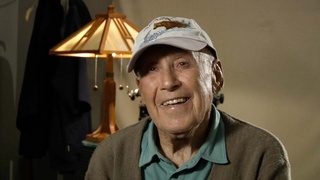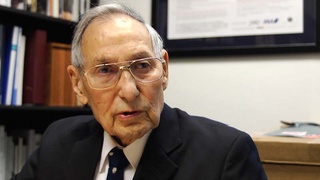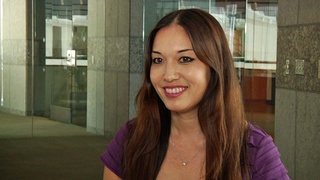Interviews
Learned what it meant to be called “Jap” in Heart Mountain
While we were in camp, I began to learn what it meant to be called “Jap.” All the time… Occasionally, the administration of the camp —which was all White—let us out on little tours, fieldtrips, you know, for children, fieldtrips to Cody, Wyoming, which was like, one of those single-street, towns in the middle-West...I don't know how your town was but, one or two main streets and that’s it. So, then, you see signs in the windows, “No Japs welcome here,” “You’re not...” any way, all kinds of handmade signs all around there, even from a child’s point of view you can tell the fieldtrip was ridiculous.
Date: September 15, 2017
Location: California, US
Interviewer: Jennifer Cool
Contributed by: Jennifer Cool, Matthew Purifoy
Explore More Videos

Traumatic experiences before camp
(1913-2013) Doctor specializing in obstetrics in Southern California

“Everybody went in like sheep”
(1913-2013) Doctor specializing in obstetrics in Southern California


Reception of Hamako by family
(1916 - 2013) Member of the U.S. Military Intelligence Service

Memories of Poston
(b. 1930) Half Japanese and grew up in both Japan and the United States.

Arriving at Poston
(b. 1930) Half Japanese and grew up in both Japan and the United States.



Writing a novel on the 442nd
Jewish Japanese American journalist

Meeting Hamako in Japan
(1916 - 2013) Member of the U.S. Military Intelligence Service

Meeting Mr. Amano
(1916 - 2013) Member of the U.S. Military Intelligence Service

Marriage and Returning to US
(1916 - 2013) Member of the U.S. Military Intelligence Service

Feeling prejudice while looking for jobs
(1919 - 2015) Nisei who served in World War II with the 442nd Regimental Combat Team

Generosity of the Italians
(1919 - 2015) Nisei who served in World War II with the 442nd Regimental Combat Team

Invited to teach at Harvard by his boss
(1919 - 2015) Nisei who served in World War II with the 442nd Regimental Combat Team
